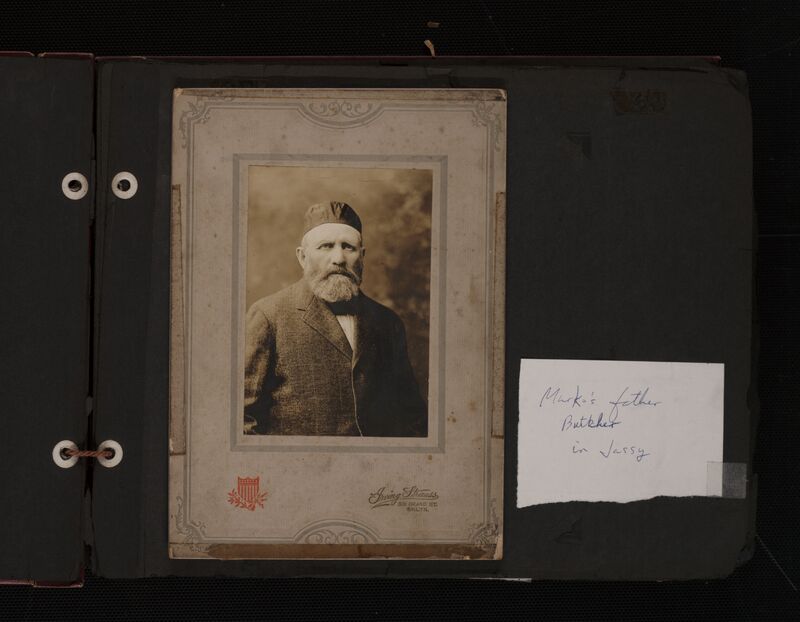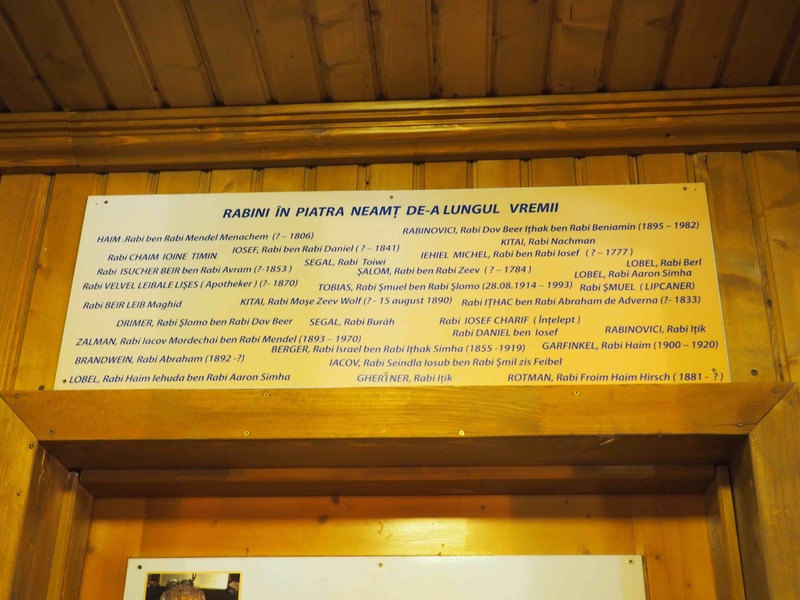Iași Romania
My great-grandmother Paulina had said she was from Bucharest, and that she married a son of a butcher and moved to Iași, in the far northeast corner of Romania. I found out later that Paulina and her family were from Piatra Neamt, a small town in the mountains Northwest of Iași. When asked why Paulina might have insisted upon her Bucharest identity, my mother thought likely she just wanted to be viewed as being from Bucharest. Paulina was proud of her knowledge of French in addition to English, Barbara thought. Paulina had to learn English when she arrived in the United States and her grandchildren both laughed at and were fond of her accent. I know this, because as I was growing up I heard the gentle jokes about her accent repeated, even though Paulina was long gone by then. I have a photo of my great-great grandfather, “Morris Marcovici” who was a Shoichet in Iași (kosher butcher).
When I visited the Baal Shem Tov Synagogue in Piatra Neamt, I found out that Paulina was the granddaughter and great granddaughter of an esteemed line of rabbis (Rabbi Kitai) of the Baal Shem Tov Synagogue in Piatra Neamt, Romania.
As I explored my family’s past, for the first time, I read about the 1941 pogrom in Iași, Romania. It is remarkable that such a massive event was not discussed among the family. In fact, I understand that Barbara and Bob were not even aware of the horror. I met Serge Haber in Vancouver, a survivor of the Iași Pogrom. It was the day after Serge’s Bar Mitzvah when Germany and Romania invaded the Soviet Union during the second world war. On June 29, 1941 Antonescu ordered the cleansing of the Jews of Iași. Thousands of Jewish men, women and children were murdered on the street or taken on death trains to Podu Iloaiei. For almost a week, the Romanian army, police and civilian mobs murdered approximately 14,850 Jews. (Yad Vashem, 2004). At our meeting, Serge requested that his own description be heard directly. (S. Haber, October, 2019), and so you may find Serge's testimony here.
With photographs, some names, and new knowledge of the specific atrocities that occurred in my grandmother’s town of birth I grew committed to travel to Romania to learn more. Although I was admonished by members of the local Jewish community who had conducted their own post search for family history in other parts of Eastern Europe that I would likely find nothing, I was determined to seek more information.

